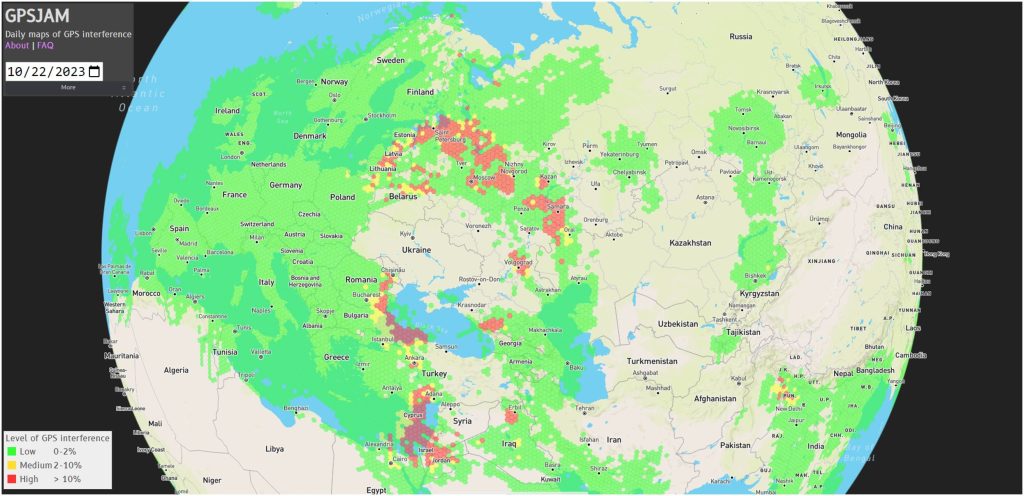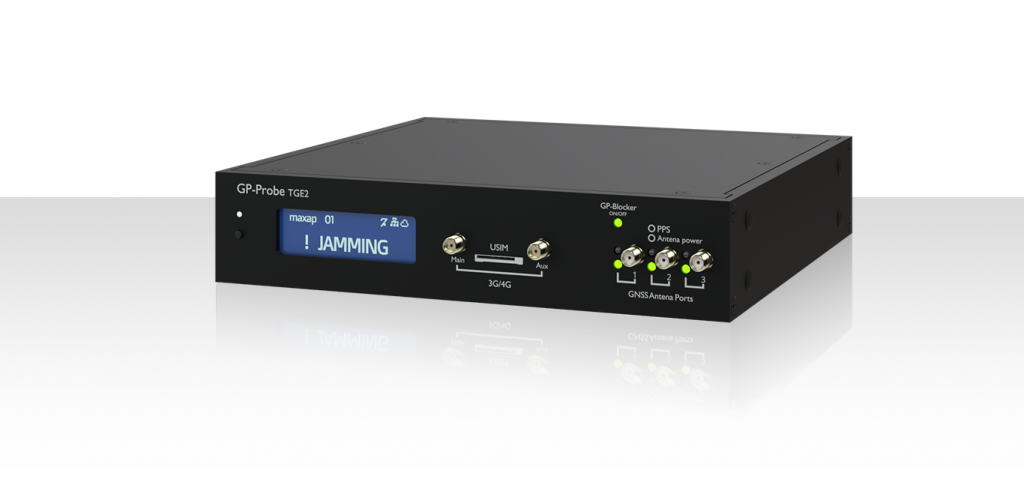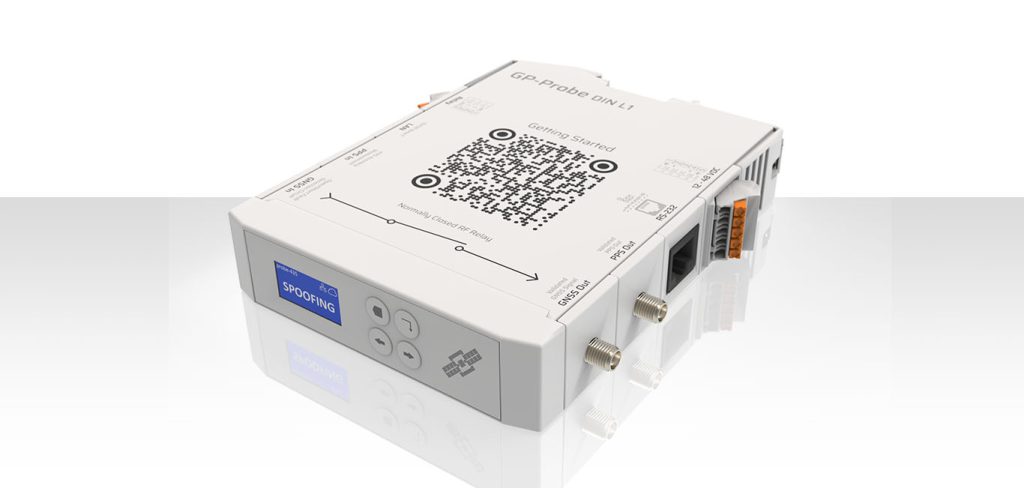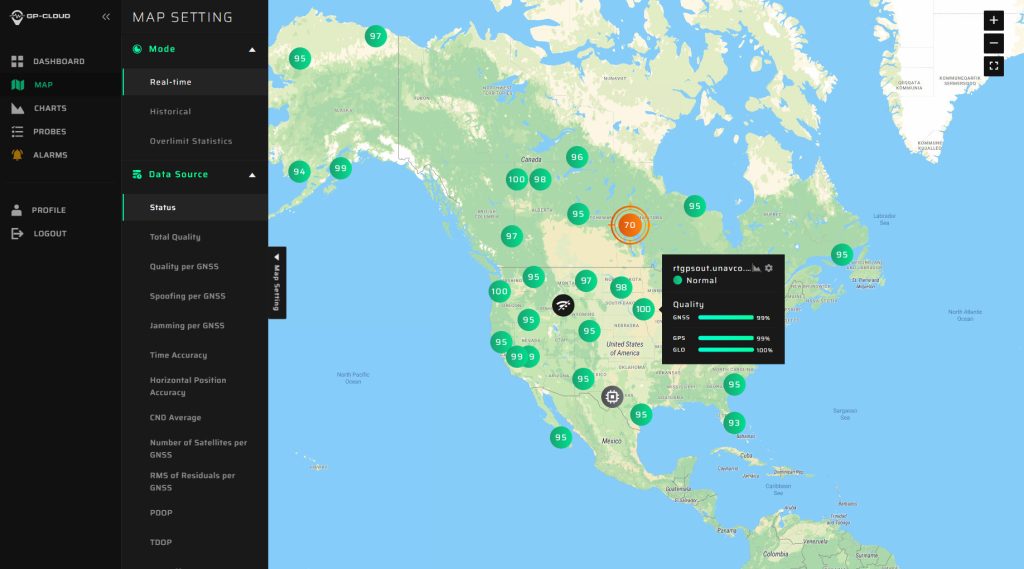In an era where accurate positioning and timing are crucial, the rise of GNSS-related threats like spoofing and jamming is a serious concern. Our White Paper offers an in-depth look at these challenges and the innovative solutions GPSPATRON provides to secure GNSS-reliant systems. Through rigorous testing and strategic approaches, we present ways to safeguard and maintain the integrity of critical infrastructures. This document is designed to guide and inform stakeholders seeking to understand and address the vulnerabilities within GNSS-dependent networks.
GNSS-Dependent Critical Infrastructure
In our increasingly interconnected world, the accuracy and integrity of GNSS signals is paramount. GNSS receivers, numbering in the billions globally, are integral to a myriad of sectors, yet remain vulnerable to RF interference like jamming and spoofing. This poses threats to critical national infrastructures:
Financial Services
Based on regulations MiFID II and SEC 613, financial service firms in Europe and the US must comply with the stringent requirements of time synchronization. GNSS spoofing attacks can cause a timestamp shift that influences the security and integrity of banking transactions.
Power Grid System
Phasor Measurement Units (PMUs) are vital for keeping a nation’s power grid stable by measuring electrical parameters. They rely on precise GNSS-provided time synchronization. Any errors in timing can trigger widespread blackouts.
Autonomous Machines
The success of autonomous machines requires uncompromised accuracy and reliability of the GNSS. Coordinate or speed manipulations can lead to undesired damages, and even human loses.
5G
Meeting the 5G time synchronization accuracy requirements is the most challenging for the industry. GPSPATRON helps to obtain the mandatory precision from GNSS in difficult jamming conditions, an inferior GNSS antenna placement, and even under spoofing.
DVB-T/T2
Digital broadcasting in Single Frequency Networks (SFN) mode like DVB-T/T2, T-DMB, DAB, or DRM requires precise and reliable synchronization. In case of low accuracy of the PPS phase, the service falls.
Data Centers
Data centers require sub-millisecond precision timestamping for transactions and distributed data processing, log file accuracy, auditing, and monitoring. GNSS spoofing may cause SSL certificates to fail.
Marine
GNSS is currently applied to diverse marine applications such as navigation, seafloor mapping, underwater exploration, dredging, offshore drilling, and pipeline routing. At the same time, thousands of GNSS spoofing incidents at sea are recorded all over the world.
Railway
Spoofing/jamming of GNSS signals can seriously disrupt Automatic Train Control Systems, which depend on GNSS for accurate speed and location data. Interference poses a serious safety risk and schedule disruption.
Airport
According to ICAO Annex 10 requirements, airports need to implement GNSS monitoring and recording systems to ensure a quick response to the degradation of accuracy and to conduct incident investigations.
Network RTK
GNSS RTK network is a critical part of many applications with precise, real-time positioning requirements. RTK base station must have reliable GNSS spoofing protection. Incorrect data can be detrimental to thousands of users.
GNSS Jamming & Spoofing
GNSS signals are extremely faint, comparable to viewing a car’s headlights from thousands of miles away, and they have no inherent protection against interference. Industrial equipment can unintentionally disrupt these signals, in addition to deliberate interference like jamming and spoofing:

JAMMING
Definition:
Noise generation in GNSS operation bands. Prevents reception of signals and determination of coordinates and time.
Use Сases:
- Auto transport drivers to defraud vehicle tracking systems, road tolling systems.
- For personal privacy.
- Military conflicts/exercises to disable navigation in a region.
Infrastructure Threat:
- Aircraft landing in poor visibility conditions
- Operations with heavy industrial drones
- Autonomous delivery
- All applications requiring accurate real-time navigation.
SPOOFING
Definition:
Generation of fake GNSS signals with simulation of incorrect coordinates and time.
Use Сases:
- Anti-drone systems.
- Military Operations: to mislead missiles, drones.
- Hacker attacks on GNSS-dependent infrastructure.
- Deception of vehicle tracking systems.
Infrastructure Threat:
- Time-dependent applications: telecom, power grids, banking transaction processing centers, data centers.
- Navigation-dependent applications: marine vessels, autonomous vehicles, automated trains, etc.

10 years ago, GPS spoofing used to require considerable technical skills and financial expenses. Now it can be done with low-cost commercial hardware (SDRs like HackRF) and software downloaded from the GitHub (e.e., osqzss/gps-sdr-sim).
So now, any student can organize a spoofing attack on a bank’s processing center in 15 minutes.
GNSS Interference Map in 2023
The visual data depicted in the accompanying image, sourced from the GPSjam.org portal, illustrates a significant pattern of GNSS signal disruption as recorded by the ADS-B aircraft tracking system. The presence of red indicators demarcates areas where aircraft have reported substantial difficulties in receiving GNSS signals.

The image displays only the most intense GNSS disruptions that have impacted aircraft at high altitudes. The situation on the ground is significantly worse.
Some recent news:
Dozens of planes sent off course with unprecedented navigation system attacks
‘Spoofing almost caused us to enter Iranian airspace. Missiles were waiting.’ – OpsGroup
Gaza & Israel GPS Jamming Increases with War
Suppressed GPS in Ukraine fuels development of US Army navigation tech – Defense News
GPS/GNSS interference everywhere – EuroControl at UN
Huge Increase in Middle-East Jamming
Lots of jammers near French airport
Hundreds of Drones Lost During Melbourne Show – DailyMail.com
GPSPATRON Solution
GPSPATRON provides the most robust solution on the market to safeguard vital infrastructure from GNSS spoofing, jamming, and signal anomalies that impact time and position accuracy.
The system includes a GNSS interference detector, the GP-Probe, which measures GNSS signals parameters and transmits the raw data to our web application, GP-Cloud, for immediate analysis. GP-Cloud employs advanced algorithms for detecting and classifying anomalies to identify complex spoofing or jamming attacks.
Besides the GP-Probe, GP-Cloud is compatible with multiple protocols including NMEA, RTCM, and SBF. This allows for seamless integration with any existing GNSS receiver, enabling extensive monitoring of GNSS-dependent infrastructure and providing instant notifications of any detected anomalies.
Key applications include:
- Safeguarding GNSS-dependent critical infrastructure from deliberate and non-deliberate attacks.
- GNSS interference detection, classification, and localization as part of radio spectrum monitoring.
- Protecting time-critical infrastructure against sophisticated GNSS spoofing.
- Monitoring and securing RTK base stations.
- Tracking and logging GNSS signal quality.
Notable features:
- The combination of GP-Cloud and GP-Probe ensures the detection of high-precision GNSS spoofing attacks.
- Accurate interference classification is crucial for identifying attack scenarios and formulating countermeasures.
- Genuine real-time operation with interference detection latency under three seconds.
- Limitless horizontal scaling of GP-Cloud for nationwide data processing.
- Compatibility with GPS, GLONASS, Galileo, and BeiDou systems.
The system has been validated through comprehensive testing at JammerTest2022 and JammerTest2023, affirming its robustness, low interference detection latency, and superior classification capabilities. For detailed test protocols, please refer to the following links:
GP-Probe TGE2
High performance sensor for interference detection/classification/localisation
The GP-Probe TGE2, operating in tandem with GP-Cloud, is a sophisticated instrument designed to safeguard critical infrastructures from GNSS disruptions. It not only detects interferences but also precisely classifies them into spoofing or jamming. The data it collects is crucial for in-depth analysis of GNSS attack techniques, enabling engineers to develop tailored mitigation solutions and enhance the robustness of essential national services.

Key Features
- Three RF channels enable spatial signal analysis for intentional coherent spoofing detection.
- 60 MHz real-time RF signal analyzer for spectrum monitoring, interference classification and localization with TDOA.
- PPS input for checking time server health and monitoring the entire synchronization system. The GP-Probe measures the time offset between internal and external PPS. PPS input supports low-current signals.
- Optional GP-Blocker with an embedded GNSS jammer suppresses the most powerful spoofing signals.
- PPS output for synchronization of external equipment.
- Form factor: 19-inch rack, half-size.
- Double power module: 110 – 220 AC, 18 – 75 DC.
- Active/passive GNSS antenna support.
- 4G modem and 100BASE-TX Ethernet for data transferring to the GP-Cloud.
- Embedded Lua Scripting: Develop custom scenarios for external equipment remote control via RS232/Telnet/SNMP with the embedded LUA scripting engine.
GP-Probe DIN L1
Cost effective GNSS interference detector with PPS accuracy tracking
GP-Probe DIN L1 covers three primary applications: GNSS interference detection and classification, PPS accuracy monitoring, GNSS signal quality analysis, and logging. The device is easily installed between a GNSS antenna and a receiver or time server. When an event is detected, the GNSS and PPS outputs are immediately disabled, preventing any counterfeit signals from reaching your systems.

Key Features
- The combination of three functions: interference detection, PPS accuracy and signal quality monitoring makes the device perfect for ensuring reliable synchronization of 5G infrastructure.
- Onboard RF Blocker: In the event of spoofing detection or signal quality degradation, the integrated RF switch and GNSS jammer will block your GNSS receiver, ensuring high synchronization accuracy in any GNSS interference scenario.
- Embedded Lua Scripting: Develop custom scenarios for external equipment remote control via RS232/Telnet/SNMP with the embedded LUA scripting engine.
- PPS Accuracy Monitoring: GP-Probe DIN1 measures the time offset between internal and external PPS and streams the data to GP-Cloud for real-time monitoring, statistical analysis, and user notifications.
- Easy-to-Install: The device is installed and configured in minutes thanks to the DIN-compliant mounting and the integrated Web Configuration Panel
GP-Cloud
Web app for real-time GNSS signal quality analysis, interference detection and classification
GP-Cloud is a comprehensive platform designed to streamline the monitoring of your GNSS infrastructure. By connecting RTK Base Stations through RTCM@NTRIP, or other GNSS receivers via NMEA@NTRIP, GP-Cloud offers real-time alerts on signal anomalies. It facilitates detailed post-event analysis to craft robust defense strategies against GNSS spoofing and jamming. With the integration of our GP-Probe, users gain a granular analysis of GNSS interference, enhancing both immediate response and long-term protective measures.
Key Features
- Real-time anomaly detection in GNSS observation. Supports: RTCM, NMEA, and Septentrio SBF protocols.
- High-precision detection and classification of sophisticated spoofing attacks.
- Enterprise-Grade Application: real-time, high-load operation, scalable to nation-wide data processing.
- GNSS Quality Monitoring
- Data Logging
Book a Demo
Discover the capabilities of the GPSPATRON system by scheduling a live demonstration. Witness the advanced solutions that safeguard against GNSS threats, tailored to protect your critical infrastructures. Contact us to arrange a convenient time for your demonstration.



